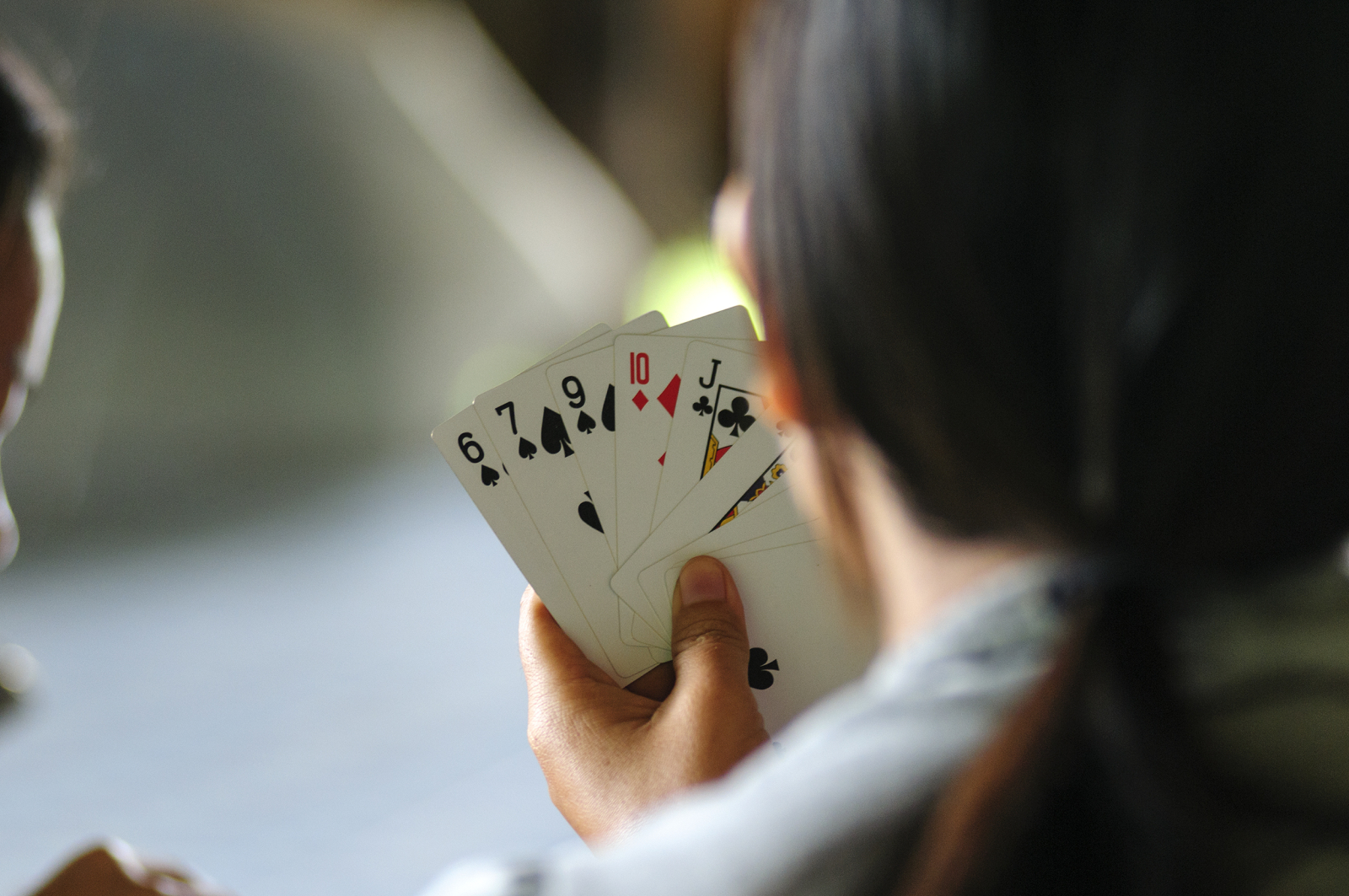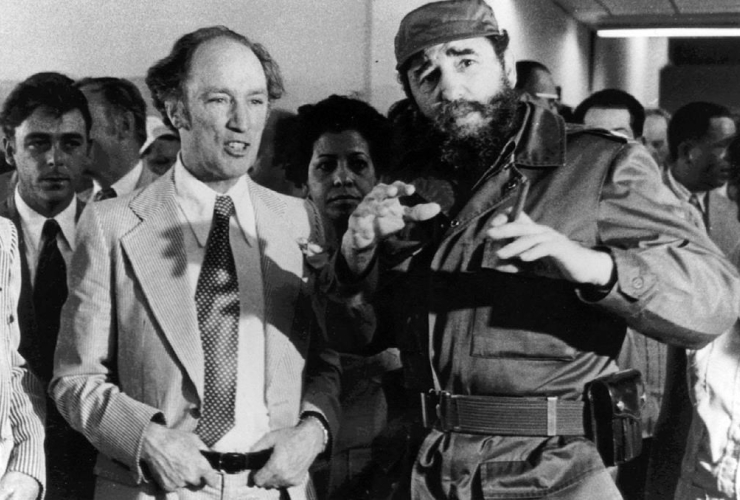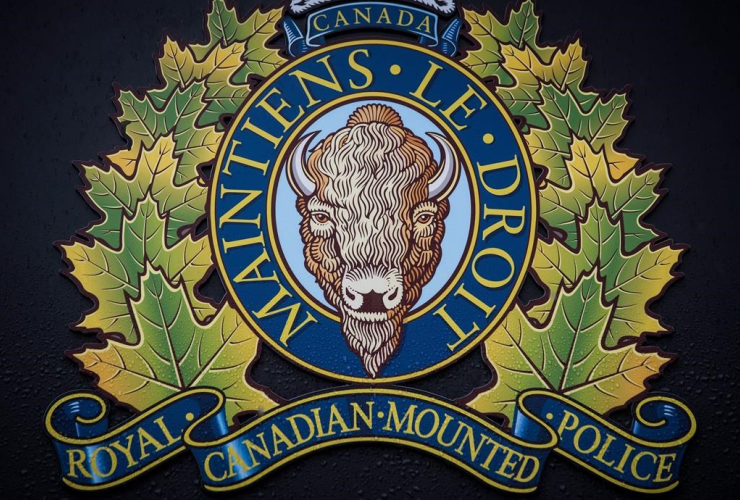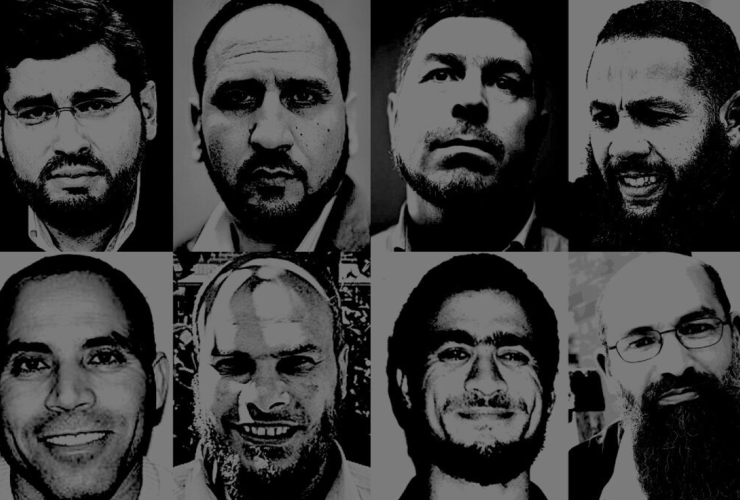When Leonarde Keeler showed off the machine he helped invent, he usually brandished a deck of playing cards.
He would have his subject, hooked up to an array of electrodes and sensors, pick eight cards from the deck. Without showing anyone, the subject would shuffle the cards into the deck. Keeler went through all 52, one at a time, instructing his subject to deny picking the card, even if it was the one they had chosen.

Checking his machine, which monitored their breathing and heartbeat, Keeler could catch his subject in a lie. A faster heartbeat or slowed breathing indicated the card was, in fact, his subject’s, to the wonder and amazement of his audience.
That’s what he told them, anyway. Keeler, a hobbyist magician, actually used some sleight-of-hand to mark the eight chosen cards, so he could identify them later. Maybe the machine would catch his subject in a lie — but, if not, a simple card trick was a handy failsafe.
He had designed a machine to catch lies, and lied to sell its success.
It’s been more than 80 years since Keeler co-invented the polygraph machine. Since then, the device, which professes to be able to detect lies, has taken a beating. In 1987, the Supreme Court of Canada concluded that “The polygraph has no place in the judicial process where it is employed as a tool to determine or to test the credibility of witnesses.” The American Psychological Association, in 2004, warned, “There is no evidence that any pattern of physiological reactions is unique to deception.”
Doug Williams says the machine “is no more accurate than the toss of a coin” — and he would know, as a former cop who coaches people on how to beat the test. (Williams went to jail for witness tampering because of it.)
Even still, the polygraph pops up on daytime TV and primetime cop dramas. When Dr. Christine Blasey Ford appeared before Congress to level accusations of sexual assault against Supreme Court nominee Brett Kavanaugh, she submitted the results of her polygraph exam.
And, for the Royal Canadian Mounted Police, polygraphs are a daily occurrence. In fact, the RCMP conducted more than 4,000 polygraph tests in 2018 alone, according to the Mounties themselves — mostly to screen applicants for security clearance, but for witnesses and suspects in criminal cases as well.
It’s all part of the work of the Truth Verification Section, a little-known unit of the federal policing service which seeks to ferret out lies in suspected criminals and would-be spies.
For the past two years, I’ve been looking into the Truth Verification Section: Requesting interviews, filing access to information requests and pouring over criminal cases. What I’ve come to discover is that the RCMP has a keen interest in saying as little as possible about the unit’s work — and saying even less about the futuristic technology that they may one day employ. The Mounties say the secrecy is necessary to preserve the integrity of their investigations.
But it’s worth asking if our federal police ought to be pursuing some of this technology, which appears ripped from dystopian crime flicks like Minority Report. While police admit to using the polygraph, the unit is exploring untested technology, including brain scans, voice stress analysis, laser Doppler vibrometry, thermal imaging and others. The RCMP believe all this technology has the potential to detect lies. The science is still out on that question, and the conversation about the civil liberties impact of these tests has hardly begun.
This technology speaks to a core desire of humanity: To know when we are being lied to. But, often, that desire can overcome the scientific shortcomings of the instruments designed to do exactly that.
And yet, even with the serious limitations and questionable science, few rules govern how police in Canada can use this technology.
We don’t even know what technology the RCMP is using.

One of the only windows into the Truth Verification Section’s work has been its webpage. But even that can be an opaque porthole into an inscrutable organization.
Otherwise, public mentions of the unit are scarce, but they exist.
In 2014, Amherst News was in attendance when Sgt. Brian Richardson of the Nova Scotia wing of the RCMP unit spoke to a local Rotary Club about his work.
“If you’re asked a question about a crime and you have first-hand knowledge of that crime it’s going to show,” Richardson told the assembled volunteers. “The RCMP has been using the polygraph since the early 1970s and it really is very accurate. It’s a very valuable tool to assist in investigations.”
When the RCMP showed up at Postmedia reporter Juliet O’Neill’s doorstep in 2004, trying to ferret out the source of a leak of a classified dossier, they searched her home and interrogated her about the documents. Only later was it revealed they had members of the Truth Verification Section in tow.
In the fall of 2014, when a gunman opened fire on a Canadian Forces reservist at the national war memorial in Ottawa before breaking through the front doors of Parliament, members of the Truth Verification Section were dispatched to interview and polygraph an array of witnesses, according to the 2015 RCMP department performance report.
Beyond those instances, it can be remarkably hard to find out much of anything about the lie-catching unit.
Since I first began looking into the Truth Verification Section two years ago, I’ve been trying to get a breakdown of what, exactly, the unit does.
A spokesperson for the Mounties confirmed some statistics about the unit’s work: in 2018, the unit conducted 3,654 pre-employment polygraph exams; 548 “forensic” polygraphs of witnesses and suspects; and on 45 occasions used “statement analysis.”
As their website explains, the statement analysis process “is a scientific approach that combines many disciplines including linguistics, psychology, sociology, criminology and psychiatry to form a systematic method of analyzing speech patterns to determine if statements originated in memory or imagination.”
Asked directly whether the unit uses other tactics or processes, they wouldn’t say.
“The RCMP does not discuss specific police techniques or tools outside of court, in order to maintain the integrity of investigations,” a spokesperson said in May.
When pressed, they added that “disclosing details about investigation techniques could potentially compromise the effectiveness of specific techniques we use, as well as the security of members working on active investigations.”
An interview request with someone from the unit was ignored.
For years, the Truth Verification Section’s website advertised five main tactics employed by the branch, including the polygraph and statement analysis.
It also mentions the RCMP’s interest in “voice stress analysis,” which works to catch “tiny frequency modulations called micro tremors in the human voice.” It adds that the technique “is currently utilized in evaluation and research applications only.”
The spokesperson declined to comment on any specific technique, except for voice stress analysis. “The RCMP doesn't use it in any settings (forensic or pre-employment),” they wrote.
“We continuously keep informed of new techniques and technology involving research-based deception detection instruments,” they wrote.
Until 2017, the website also talked up the utility of one particularly unreliable technique.
“Forensic hypnosis is useful in eliciting information from a complainant, victim or witness,” the site read. “Hypnosis is intended to enhance memory recall and not to establish the truth.”
The since-removed online document acknowledged that interview subjects may “confabulate” while under hypnosis, so it cautioned officers to corroborate all information. “Hypnosis is not used in relation to suspects or accused/charged persons for the noted reasons,” it concluded.
Hypnosis is notoriously unreliable and not backed up by a compelling body of research. It also raises grave problems around civil liberties. It’s for those reasons that the Supreme Court banned the use of testimony obtained via hypnosis in 2007.
And yet, the RCMP website and official pamphlets advertised the utility of forensic hypnosis right up until 2017 — until I inquired about the practice.
“Operational policy advises members of the Supreme Court decision and the RCMP does not use hypnosis as a technique,” a spokesperson told me then. “We will be updating our website shortly.” Sure enough, mention of hypnosis was scrubbed not long after.
Apologies from Prime Minister Justin Trudeau
The Truth Verification Section has two main functions: To assist in criminal investigations and to screen prospective employees of the federal government’s security services.
In order to obtain the security clearance necessary for employment in a variety of jobs — from the Canadian Security Intelligence Service to the Communications Security Establishment, the Department of National Defence, and even the RCMP itself — an applicant must pass a polygraph exam. The RCMP runs the majority of those tests.
“Applicants who demonstrate higher levels of honesty and integrity usually find their experience with the [pre-employment polygraph] more rewarding than those who choose to withhold information,” reads the RCMP’s advice to job applicants undergoing the polygraph exam.
Indeed, given the pairing of the scientific-seeming pageantry of the polygraph with some of the questions asked during those interviews, it would be hard not to feel nervous.
According to a 2006 questionnaire used by the RCMP for pre-employment polygraph tests — which has since been scrubbed from the web — applicants are asked as many as 162 questions, including “Have you ever engaged in bestiality?” and “Have you ever solicited the services of a prostitute?”
The questionnaire also asks prospective officers whether they have engaged in any behaviours in their past for which they could be blackmailed — a long-time fear for the Mounties.
In the 1960s, as the national security apparatuses of NATO countries grew fearful of Communist infiltrators, researchers in Ottawa developed a machine that purported to identify homosexuals in the ranks of the civil service and military. As with a polygraph, interview subjects would be hooked up and fed stimuli — in this case, the interviewer would say various words thought to be associated with the queer community.
The so-called fruit machine “measured different interest patterns by means of a machine which simultaneously projected a visual stimulus and photographed the pupil of the eye at half second intervals. This procedure was supposed to produce an involuntary ‘response that cannot be controlled by the subject,’” wrote researcher and sociologist Gary Kinsman in 1995.
The machine enabled a campaign of intimidation against queer civil servants, providing for a pseudo-scientific excuse to investigate and fire many of them.
Prime Minister Justin Trudeau apologized for that campaign in 2017.
RCMP lie-catchers
The polygraph machine, for job interviews, is as much a prop as it is a scientific instrument. It is there to convince the applicant that they must tell the truth, or else they’ll be caught.
But that conversation gets more difficult with other types of technology that purport to catch lies.
While it can be difficult to tell, exactly, what tactics the RCMP’s lie-catchers are employing, the unit appears to evince a profound belief that this technology can be used to catch bad guys — a belief that seems to rely on some rather avant-garde science.
A set of PowerPoint presentations, given by members of the Truth Verification Section hailing from various parts of the country, paint a picture of a team with unwavering support in these long-disputed tools. (The PowerPoints were obtained under the Access to Information Act.)
In one PowerPoint presentation, the unit contends that polygraph tests are just as reliable as a host of medical screenings.
"The average diagnostic accuracy for detecting deception with polygraph was similar to diagnosing breast cancer with MRI or ultrasound,” it reads, citing a research paper published by Philip Crewson, a professor and official with the Department of Justice.
It’s a compelling point, but it is perhaps not entirely fair. Crewson does not have a science background — he holds a doctorate in public administration, and handles bankruptcies and insolvencies for the Justice Department. Crewson’s paper is a literature review, analyzing studies from 1986 to 2001.
Two years after Crewson’s study was published, the National Academy of Sciences published a report analyzing the entire body of research on the polygraph and how it applies to security screening. The academy concluded that “overall, the evidence is scanty and scientifically weak.” The academy did conclude that, notwithstanding the quality of the research, it appears as though polygraph tests pertaining to very specific events, where the suspect has no knowledge about how to evade a polygraph, “can discriminate lying from truth telling at rates well above chance, though well below perfection.”
But where the polygraph does have some compelling research underpinning it, other techniques listed by these RCMP presentations seem to exist largely in the realm of science-fiction.
Among them is “laser Doppler vibrometry,” which involves using a laser to make incredibly precise and minute measurements. It’s not clear how this may be used for catching untruths.
“Evoked Potential Electroencephalography,” meanwhile, is a process that seeks to measure the P300 brain wave, which supposedly indicates a subject’s familiarity. It falls into the world of research known as “brain fingerprinting.” It has recently gained notoriety after appearing on the Netflix show Making a Murderer. There is far from scientific consensus on what the P300 tells us, and how or whether it can be accurately measured.
Because the RCMP won’t discuss specific techniques, it’s hard to know how seriously the RCMP is taking these techniques — or whether they have deployed them in the field.
Polygraph results inadmissible in court, Canadian Supreme Court rules
Legislation does not govern the RCMP’s use of most investigative techniques. The courts are largely responsible for keeping police services in check. But it’s possible police are doing things that the courts haven’t yet heard about.
Much like Leonarde Keele’s sleight-of-hand, the RCMP looks to create a mystique around the polygraph machine. The idea is to create a belief that the polygraph is a magic box that can stare into your soul.
When the only risk at hand is being hired or not, perhaps that mix of physiology and psychology is above-board. But when it comes to criminal cases, it’s not quite so clear.
The Supreme Court ruled that polygraph results are not admissible in court in 1987. It did not rule, however, that statements given during a polygraph should be excluded as well.
In 1995, a volunteer firefighter living in rural Nova Scotia drove to a motel to meet several RCMP detectives. He was suspected of setting a series of fires around his community. Police asked him if he would submit to a polygraph test — informing him he was not under arrest, he did not have to reply to questions, and that he was free to leave at any time.
The firefighter agreed. Police asked him about the fires and he denied any involvement.
“When asked the question about these eight fires, the polygraph says that you are not truthful,” the RCMP officer told him. “The machine does not lie.”
The firefighter broke down and confessed.
His case would later go to the Supreme Court, arguing, in part, that the officers’ suggestion of the infallibility of the machine amounted to unacceptable deception. The court ultimately upheld his conviction, ruling that a certain amount of police “trickery” is acceptable.
Since the test wasn’t admissible in court, the justices didn’t hear whether the firefighter actually failed the polygraph, or whether police lied to him.
The rules governing the use of polygraph tests are more permissive in other countries.
Given the fact that, as the RCMP contends, “Canadian polygraph examiners are considered among the best in the world,” polygraph experts here have been happy to share their expertise abroad, including in Indonesia.
In 2016, the RCMP provided polygraph equipment and training to police in Jamaica, even helping the island nation create a “Polygraph Center for Excellence in the Caribbean.”
A year later, members of the RCMP Truth Verification Section travelled to Indonesia to train officers there on the ins-and-outs of the polygraph, especially for counter-terror investigations. According to a Facebook post, one of the officers who travelled to Semarang said, “The opportunity to share our skills and experiences with partner agencies in Indonesia was something I will hold as a highlight of my career.”
Unlike Canada, polygraph test results are admissible in Indonesian courts, which still employs the death penalty, even for non-violent drug offences. And, indeed, polygraph tests have been used recently — to prosecute a Canadian.
In 2015, Canadian Neil Bantleman, a teacher at the Jakarta International School, was arrested and jailed for allegedly sexually assaulting five students. The investigation and prosecution were intensely criticized as being premised on faulty information and unreliable testimony. A significant part of the prosecution’s case were the results of polygraph tests which purported to catch Bantleman and his co-accused lying.
Despite the problems in the case, and an intervention from Trudeau himself, the two were convicted and Bantleman was sentenced to 11 years in prison.
Truth verification?
The quest to separate fact from fiction is primordial for police officers. So it’s no wonder Canadian cops have placed priority on seeking tools, new and old, to help them do exactly that.
But legislative oversight of these tactics feels like a necessary precondition. Surely there is a conversation to be had among lawmakers before the state is granted freedom to measure our brainwaves for a sign of deception.
You would be hard-pressed, however, to find any evidence of that conversation. Parliament has not, in recent decades, studied the powers and practises of the Truth Verification Section. There has been no real analysis of their use of the polygraph or other, more future-focused technology.
Geez this is embarrassing. It
Geez this is embarrassing. It's the old, "I know you did it and just have to find out how" setup, with dials.
This isn't science it is a
This isn't science it is a throwback to medieval magical thinking. The RCMP are acting like the infamous Inquisition and the justice system had better change their name to the Alchemical Examination of Crime and Punishment system.





Comments